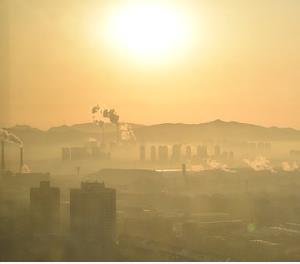About Lesson
Smog and Photochemical smog
- Smog is formed by combination of smoke and fog.
- A thick fog-like layer in the atmosphere, especially during winters it is known as smog as it is made up of smoke and fog.
- Smoke may contain oxides of nitrogen which combine with other air pollutants and fog to form smog. The smog causes breathing difficulties such as asthma, cough and wheezing in children

Photochemical smog
- It is caused due to hydrocarbons and nitric oxide.When their concentration rises beyond limit a chain reaction occur from their interaction with sunlight in which NO is converted into nitrogen dioxide.
- This nitrogen dioxide in turn absorbs energy and breaks into nitric oxide and free oxygen atoms.
- These oxygen atoms combine with oxygen gas molecules to produce ozone .This ozone is a toxic gas it combines with un-burnt hydrocarbons in air to produce chemicals like formaldehyde, acrolein and PAN.
Harmful effects of photochemical smog
- It causes serious earth problems
- Ozone and PAN are eye irritant
- Ozone and nitric oxide irritate nose, throat, causes dryness in throat, cough and difficulty in breathing.The smog leads to cracking of rubber and extensive damage to plant life.
Photochemical smog can be controlled as:-
- Plantation of certain plants like pinesetc can metabolise nitrogen dioxide and Catalytic convertors which prevent the release of nitrogen oxide and hydrocarbons should be used in vehicles